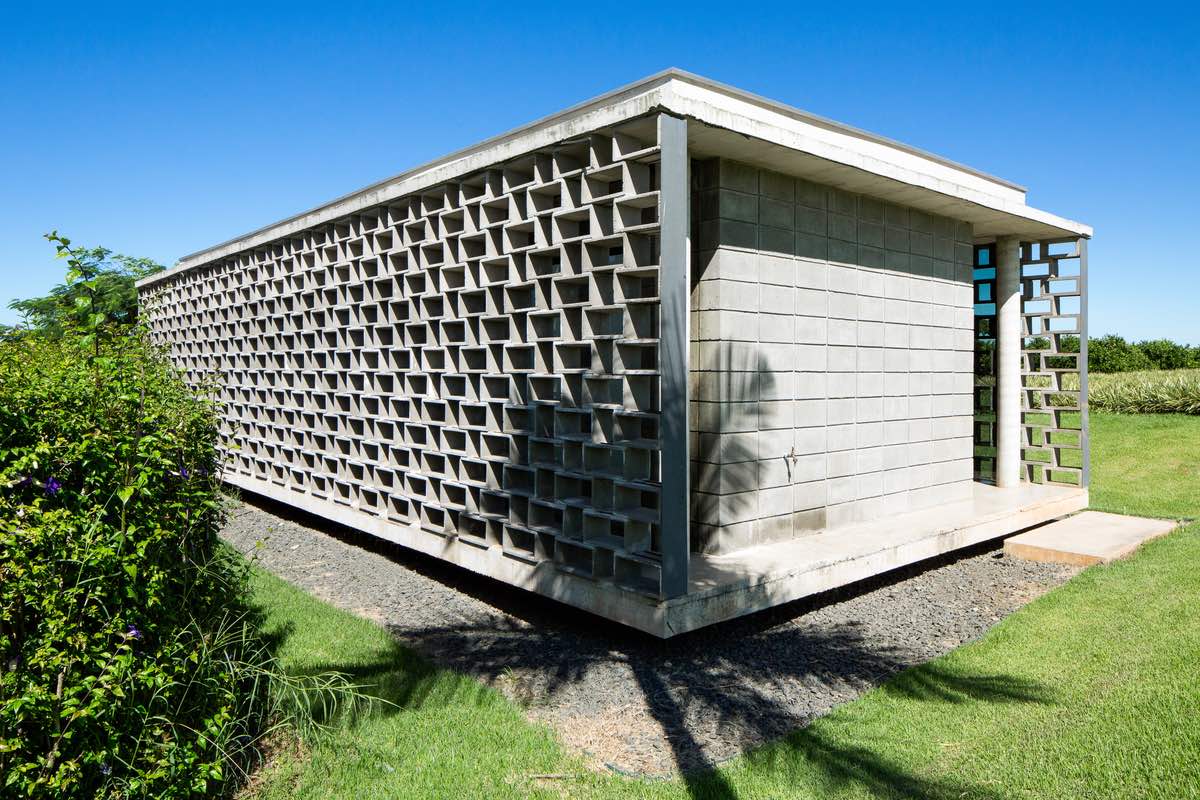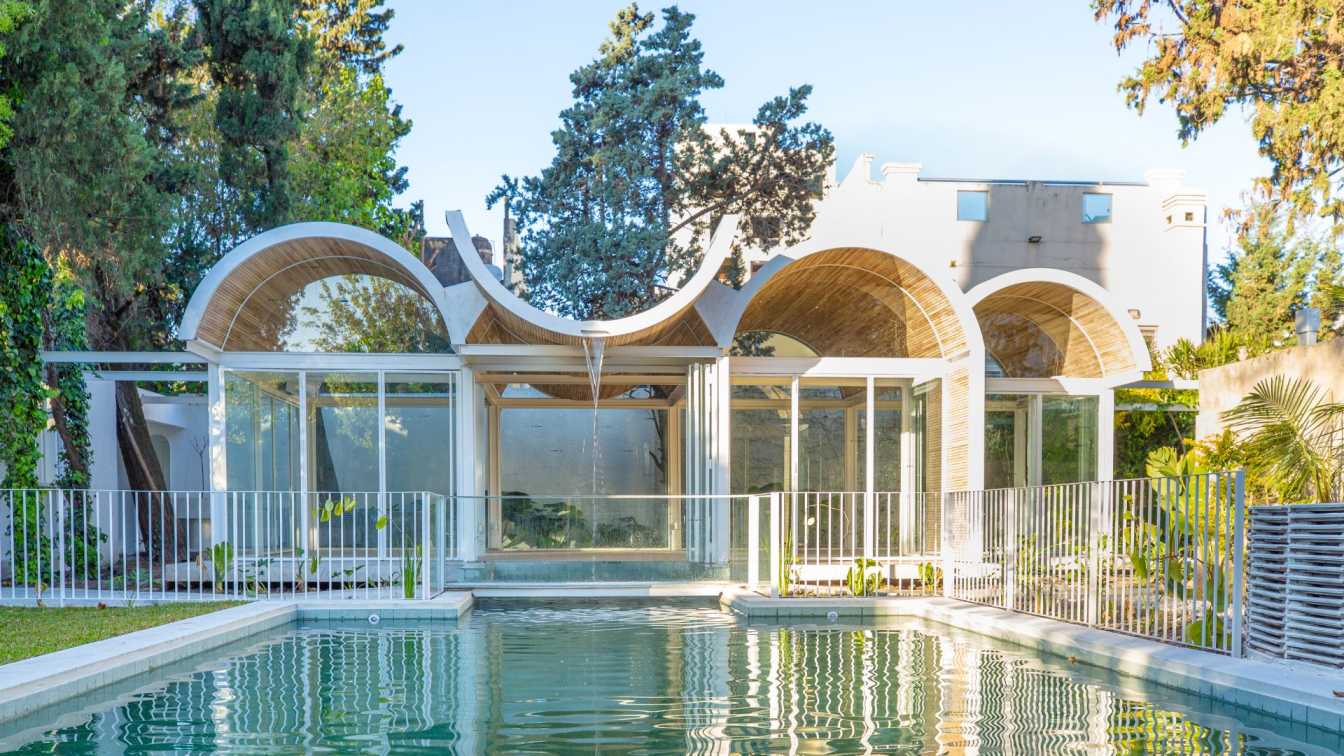TEC Taller EC: The first thing that inevitably keeps our memory in the pavilion, it is the void, that space without matter that occupies everything.
El deportivo is located in Cumbayá, one of the Andean valleys that surround the city of Quito, an area of current urban and commercial development in the capital. It is built at 2400 meters above sea level in determining equinoctial conditions such as the vertical sun and considerable climate changes between day and night.
Taking advantage of the green space of the lot and the immediate natural context, a set of palm trees of considerable height which determine the guidelines for the project, are the starting point for the proposal to test a design process based on constructive and programmatic parameters before formal speculations.
In 250m2 of construction, the minimum required program includes a non-permanent space for food service and sanitary batteries, the resulting architecture instead allows us to have the empty space to develop a countless number of activities. A free and spacious structure does not determine or limit the programs and can become anything depending on how its interior is inhabited.
The project consists of two black volumes facing and distanced, linked by a 3m high metal truss that allows the roof to reach 7.5 meters in height at its highest point and, like in a pyramid, the more it gains in height. the more the opposite faces are reconciled.
At 12 meters away, the dialogue between the extremes requires making a change in height on the roof to emphasize the distance in response to a descending natural slope that marks the entrance to the lot, an inclination that manages rainwater and points to the sky to project a greater height to the volume. The roof becomes a façade by curving and revealing the wood as if it were a tongue.
The metal truss along the volume is the structural element that supports the 15m long curved laminated wood beams, a light roof, the minimum possible matter to build the maximum number of cubic meters and unimaginable activities. Large spaces provide a vital feeling of openness, freedom of movement and action.
The project conceives the architecture from the activities that are going to be developed, that involves conceiving the space from the interior, not from the outside, not as a distanced object. For this reason, the pre-existing palm trees play an important role in the rhythm of the façade and as an element of the immediate landscape that filters the entry of afternoon sunlight.
The block lacks intermediate space because the void itself is the connector and intersection from an interior that embraces the exterior. An invitation to open to the experience of the outside and inhabit the light and air. This is an invitation to watch and experience architecture not from form or image. It is an intention to involve the body and its movement, as a starting point.
































